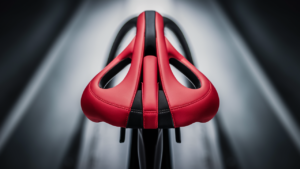Stadium seat widths vary, but they are typically around 17 inches wide. The exact dimensions may vary depending on the specific stadium and seating design.
It is important to consider the comfort and space requirements of spectators when designing stadium seating. Proper seating dimensions can enhance the overall experience for fans attending sporting events, concerts, and other entertainment gatherings. Whether it’s a fixed seating design or bleacher-style seats, ensuring an adequate width allows individuals to sit comfortably without feeling cramped.
Additionally, some stadium seats offer extra-wide options for those seeking additional space and comfort.
The Importance Of Seat Width In Stadiums
When attending a sports event or concert at a stadium, the comfort of the seating plays a crucial role in the overall experience. Among the various factors contributing to comfort, the width of the seats holds significant importance. The width of stadium seats influences the audience’s comfort and impacts their experience at the venue. Let’s delve into the factors influencing seat comfort and the impact of seat width on the audience experience.
Factors Influencing Seat Comfort
Seat comfort in stadiums is influenced by various factors, with seat width being a key determinant. Other factors include the material and cushioning of the seats, the angle of the seat back, and the presence of armrests. However, the width of the seat is particularly critical as it directly affects the personal space and comfort of the attendees.
Impact On Audience Experience
The width of stadium seats significantly impacts the audience’s experience. Narrow seats can lead to discomfort, restrict movement, and diminish the overall enjoyment of the event. On the other hand, wider seats provide more space and enhance the comfort, allowing attendees to relax and fully engage with the event without feeling constrained.
Standard Stadium Seat Dimensions
Discover the standard stadium seat dimensions and find out how wide stadium seats are. From extra-wide seats with backs to padded cushioning and armrests, these stadium seats provide ultimate comfort for sporting events, concerts, and more.
Average Seat Widths
When it comes to standard stadium seat dimensions, the average seat width can vary depending on the league and venue. However, there are some general guidelines to keep in mind.
In most cases, stadium seats range from around 17 inches to 22 inches in width. This width provides enough space for fans to sit comfortably during games and events. It is important for stadiums to accommodate fans of all sizes, ensuring an enjoyable experience for everyone.
Comparing Leagues And Venues
When comparing seat widths across different leagues and venues, it is important to consider the specific requirements and preferences of each. Some stadiums may prioritize wider seats to provide extra comfort, while others may focus on maximizing seating capacity.
For example, Nissan Stadium in Nashville offers seats that are approximately 19 inches wide, providing a comfortable seating experience for spectators. On the other hand, Cascade Mountain Tech offers stadium seats that are 17 inches wide, designed to be lightweight and easy to carry.
It is also worth mentioning that fixed seating designs, such as those provided by Irwin Seating Company, take into account the importance of seat width in providing optimal comfort for spectators. These designs ensure that the seats are wide enough to accommodate fans of various sizes.
In conclusion, standard stadium seat dimensions can vary, but most seats range from 17 to 22 inches in width. The specific width may depend on the league, venue, and seating design. Ultimately, the goal is to provide a comfortable seating experience for fans, regardless of their size.
The Evolution Of Stadium Seating
Historical Trends
Historically, stadium seating has undergone significant changes, reflecting the evolving needs and preferences of spectators. In the past, stadium seats were narrow, often leading to discomfort during long sporting events or concerts. This prompted the need for a shift in design to accommodate the modern viewer.
Modern Developments
Modern stadium seating now focuses on providing greater comfort and space for spectators. The width of stadium seats has increased substantially, offering a more enjoyable viewing experience. Manufacturers have recognized the demand for wider seats, leading to the introduction of various options to cater to different body types and preferences.

Design Considerations For Stadium Seating
Stadium seating design takes into account the width of seats to ensure spectator comfort. Typically, stadium seats range from 17 to 20 inches wide, allowing for ample personal space and comfort during events. The consideration of seat width is crucial in providing an enjoyable experience for attendees.
Ergonomics And Human Factors
When designing stadium seating, it is crucial to consider ergonomics and human factors to ensure optimal comfort for spectators. The seats should be designed with the human body in mind, taking into account factors such as posture, body shape, and natural movement. Ergonomically designed seats provide proper support to the back, neck, and legs, reducing the risk of discomfort or fatigue during long periods of sitting.
Moreover, the width of stadium seats is an important consideration. Wide seats allow spectators to have ample space, preventing them from feeling cramped or restricted. This is especially important for larger individuals or those who prefer extra space. By providing wider seats, stadiums can enhance the overall experience for spectators, allowing them to enjoy the event in comfort.
Material And Durability Concerns
Another crucial aspect of stadium seating design is the choice of materials. The seats should be made from high-quality materials that are durable and long-lasting. Stadiums are often subjected to heavy use and exposure to various weather conditions, so the seats need to withstand wear and tear.
The material used should also be easy to clean and maintain, as stadiums host a variety of events where spills and accidents may occur. Seats that are stain-resistant and easy to wipe down ensure a hygienic environment for spectators. Additionally, the material should be resistant to fading or discoloration caused by sunlight exposure, ensuring that the seats maintain their appearance over time.
Furthermore, the durability of the seats is a key consideration. Stadium seating should be able to withstand the weight and movement of spectators without experiencing structural damage. Reinforced frames and sturdy construction techniques are essential to ensure the seats can withstand the rigors of frequent use.
When designing stadium seating, it is important to consider the ergonomics and human factors, as well as the material and durability concerns. By prioritizing comfort and using high-quality materials, stadiums can provide a pleasant and enjoyable experience for spectators. Whether it’s a sporting event or a concert, comfortable and durable seating enhances the overall experience for all attendees.
Stadium Seat Sizing Guide
If you’ve ever attended a sports event, concert or any other activity hosted in a stadium, you know how important it is to have a comfortable seat. Stadium seating is designed to accommodate different types of people and their needs, but not all seats are created equal. In this guide, we’ll take a closer look at stadium seat sizing and how to find the right fit for you.
Measurement Basics
When it comes to measuring stadium seats, there are three key dimensions you need to consider:
- Width: This is the distance from one armrest to the other. It determines how much space you have to sit comfortably.
- Depth: This is the distance from the front of the seat to the backrest. It determines how much legroom you have.
- Height: This is the distance from the floor to the top of the seat. It determines how high or low you’ll be sitting.
Keep in mind that stadium seats can vary in size depending on the venue, so it’s important to check the dimensions of the seats before purchasing tickets or attending an event.
Finding The Right Fit
When it comes to finding the right fit for your stadium seat, there are a few things to consider:
- Your Size: If you’re a larger person, you’ll want to look for seats with a wider width and deeper depth to ensure you have enough space to sit comfortably. Some venues offer seats specifically designed for larger individuals.
- Your Needs: If you have any specific needs, such as back support or accessibility requirements, make sure to check with the venue to see if they offer seats that meet your needs.
- The Event: The type of event you’re attending can also impact your seat choice. If you’re attending a longer event, such as a football game, you may want to opt for a seat with more padding or support to prevent discomfort.
By considering these factors and checking the dimensions of the seats beforehand, you can find a comfortable seat that meets your needs and allows you to enjoy the event to the fullest.
Extra-wide Seats: Luxury Or Necessity?
Experience the ultimate comfort at stadiums with extra-wide seats that offer luxurious space and provide necessary room for a more enjoyable game or event. The wider dimensions of these seats ensure a more comfortable and relaxing experience, making them a desirable feature for any stadium.
Extra-Wide Seats: Luxury or Necessity?
When it comes to stadium seating, comfort is key. With the rise in popularity of sports events and concerts, it’s important to consider the seating options available. One such option is extra-wide seats. But are they a luxury or a necessity? Let’s explore the benefits of extra space and the target audience for larger seats.
Benefits Of Extra Space
Extra-wide seats offer a range of benefits to spectators. Firstly, they provide more space for individuals to sit comfortably, making the overall experience more enjoyable. Secondly, they are particularly useful for those with larger body types or disabilities, who may find traditional stadium seats uncomfortable or restrictive. Finally, extra-wide seats can provide a sense of luxury and exclusivity, making them a desirable option for premium ticket holders.
Target Audience For Larger Seats
The target audience for larger seats can vary depending on the event and venue. For sports events, those who may benefit from extra-wide seats include athletes and team staff, who may require more space for equipment and movement. Additionally, families with young children may appreciate the extra space for comfort and ease of movement. For concerts and other events, those who may benefit from larger seats include individuals with disabilities, who require more space for accessibility, and premium ticket holders who desire a more exclusive experience.
In conclusion, extra-wide seats offer a range of benefits to spectators and can be a luxury or a necessity depending on the individual. The target audience for larger seats varies depending on the event and venue, but can include athletes, families, individuals with disabilities, and premium ticket holders. When considering seating options for your next sports event or concert, it’s important to keep these factors in mind to provide the best possible experience for all spectators.
Comparative Analysis Of Stadium Seats
A comparative analysis of stadium seats reveals that the width of seats can vary greatly depending on the venue and seating design. While some seats may be as narrow as 17 inches, others can offer extra width for added comfort.
It’s important to consider seat dimensions when selecting tickets for a sporting or entertainment event.
Bleachers Vs. Individual Seats
When comparing bleachers and individual seats in stadiums, it’s important to note that bleachers typically offer bench-style seating with no backrests and minimal space per person. Individual seats, on the other hand, provide dedicated seating with backrests and armrests, offering more comfort and personal space. The average width of bleacher seats ranges from 12 to 20 inches, while individual seats usually measure between 18 to 24 inches in width.
Indoor Vs. Outdoor Venues
For indoor venues, the seating arrangements are often more compact due to space constraints, resulting in narrower individual seats compared to outdoor venues. Outdoor stadiums generally offer wider seats to accommodate a more relaxed and comfortable seating experience for spectators. The average width of seats in indoor venues is approximately 18 to 20 inches, while outdoor stadium seats can range from 20 to 24 inches in width.
Consumer Guide To Stadium Seats
When it comes to enjoying a game or event at a stadium, comfort is key. The last thing you want is to be squished in a narrow seat for hours on end. That’s where extra-wide stadium seats come in. In this consumer guide, we’ll explore the top picks for extra-wide seats and what to look for when purchasing one.
What To Look For When Purchasing
When purchasing an extra-wide stadium seat, there are a few key factors to consider:
- Seat Width: Make sure to check the seat width to ensure it will comfortably accommodate your body size.
- Comfort: Look for seats with padded cushioning, back support, and armrests for ultimate comfort during long hours at the stadium.
- Portability: If you plan on taking your seat to different events, consider a seat that is lightweight and easy to carry.
- Durability: Ensure that the seat is made of high-quality materials that can withstand regular use.
- Price: Set a budget and compare prices to find a seat that offers the best value for your money.
By considering these factors, you can find the perfect extra-wide stadium seat that will enhance your comfort and overall experience at the game or event.
Frequently Asked Questions
How Wide Is A Bleacher Seat?
A bleacher seat is typically 17 inches wide. This provides enough space for one person to sit comfortably during a sports event or other outdoor activities.
How Wide Is A Football Seat?
A football seat is typically around 17 inches wide. Stadium seats vary in width, but this is a common measurement for football seating.
How Wide Are Stadiums?
Stadiums vary in width depending on their design and purpose. However, the average width of a stadium ranges from 50 to 100 meters. The width of stadium seats also varies, with some being as narrow as 16 inches and others as wide as 22 inches.
The width of seats typically depends on the design of the stadium and the type of event being hosted.
How Wide Are Nissan Stadium Seats?
Nissan Stadium seats are approximately 17 inches wide, providing ample space for comfortable seating during events.
Conclusion
To conclude, the width of stadium seats varies depending on the venue and the type of seating. However, it is important to consider the comfort of spectators when designing and renovating sports venues. The size and width of seats can impact the overall experience of attending a game or event.
For those who prioritize comfort and space, there are options available such as extra-wide seats with backs. Ultimately, providing comfortable and accommodating seating is a crucial aspect of any successful sports venue.








